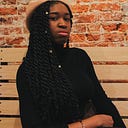Member-only story
The Curse of Good Representation
“Good representation” often puts pressure on the same marginalized creatives it claims to help

This is not an essay about creators making art depicting marginalizations they do not hold. That’s another essay. The focus of this essay is on what is often called “ownvoices”, a term created by YA author Corinne Duyvis to describe books featuring characters from underrepresented groups that the author is part of. In the spirit of that, as a Black queer woman, most of my examples will come from those specific experiences, though many of these examples can be applied to other marginalized groups.
The conversation of “good versus bad” representation is, admittedly, a slippery one, but its one I believe we should have as diversity becomes a point of interest in many industries, not only the publishing industry. However, I don’t want this article to be used as a “gotcha” moment for people who want to create art that literally causes harm. Instead, the purpose of this article is to offer grace to marginalized authors who already experience enough pressure, and to lower the expectations of perfection placed upon them (us? us.).
As a Black woman, I have a wealth of experience being the “spokesperson” for my race whether I wanted to or not. From a young age, I learned that what I did around non-Black people reflected not only on me, but on Black people as a whole. This is an experience shared by many marginalized people, especially Black people and POC in white institutions. Among loved ones, you are yourself. But out in the world, you are your visible (and sometimes invisible) marginalizations only — and you’d better be on your best behavior at all times.
Privileged counterparts do not have to concern themselves with less than stellar depictions. One white person’s mistake, bad temper, or stinging comment is often met with resistance when reflecting onto white people as a whole. (#NotAllMen could be reframed as #NotAllWhitePeople, but now I’m just being punny).
I would argue that this expectation of a perfect performance can extend to our fictional counterparts on the page (or on the screen).
What, exactly, is good representation? The answer is subjective, though the general consensus seems…
